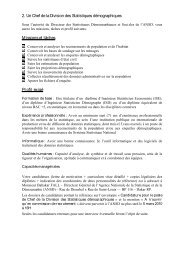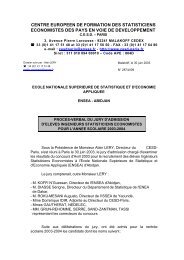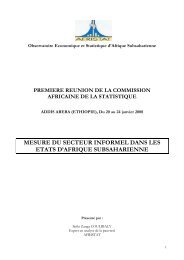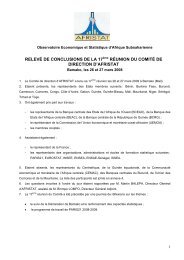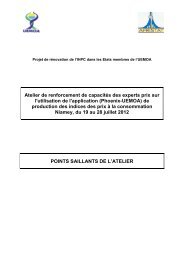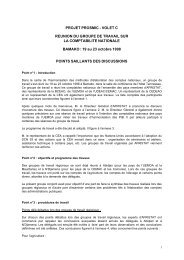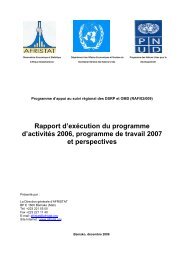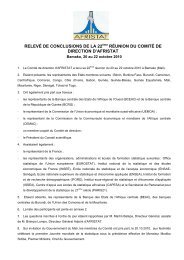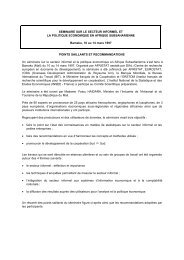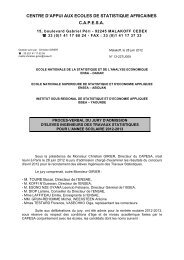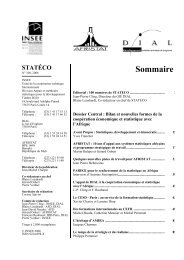Global Purchasing Power Parities and Real Expenditures - Afristat
Global Purchasing Power Parities and Real Expenditures - Afristat
Global Purchasing Power Parities and Real Expenditures - Afristat
You also want an ePaper? Increase the reach of your titles
YUMPU automatically turns print PDFs into web optimized ePapers that Google loves.
Glossary 209able as a result of the production of these goods or services(that is, taxes payable per unit of good or service produced,such as excise duties <strong>and</strong> nondeductible VAT), plus taxesthat resident enterprises may pay as a consequence of engagingin production (taxes such as payroll taxes <strong>and</strong> taxes onmotor vehicles). The former are called “taxes on products,”<strong>and</strong> the latter are called “other taxes on production.”Transitivity. The property whereby the direct PPP betweenany two countries (or regions) yields the same result as anindirect comparison via a third country (or region). It issometimes referred to as “circularity.”Transport. Includes expenditures on purchase of vehicles,operation of personal transport equipment, <strong>and</strong> transportservices.Valuables. Produced assets that are not used primarily forproduction or consumption, that are expected to appreciate(or at least not decline in real value), that do not deteriorateover time in normal conditions, <strong>and</strong> that are acquired<strong>and</strong> held primarily as stores of values.VAT (value added tax). A tax on products collected in stagesby enterprises. It is a wide-ranging tax usually designed tocover most or all goods <strong>and</strong> services. Producers are obligedto pay to government only the difference between the VATon their sales <strong>and</strong> the VAT on their purchases for intermediateconsumption or capital formation. VAT is not usuallylevied on exports.Volume measures are obtained by using PPPs to convertfinal expenditures on product groups, major aggregates, <strong>and</strong>GDP of different countries into a common currency, valuingthem at a uniform price level. They are the spatial equivalentof a time series of GDP for a single country expressedat constant prices. They provide a measure of the relativemagnitudes of the product groups or aggregates being compared.At the level of GDP, they are used to compare theeconomic size of countries. They may be presented eitherin relation to a particular currency or as an index number.Sources:The definitions in this Glossary are based on definitionsfrom the following publications:Eurostat <strong>and</strong> OECD. 2006. Eurostat-OECD Methodological Manualon <strong>Purchasing</strong> <strong>Power</strong> <strong>Parities</strong>. Paris: OECD. http://www.oecd.org/dataoecd/59/10/37984252.pdf.Kravis, I. B., A. Heston, <strong>and</strong> R. Summers. 1982. World Product <strong>and</strong>Income: International Comparisons of <strong>Real</strong> Gross Product. Baltimore:Johns Hopkins University Press.OECD. 2001. The System of National Accounts, 1993: Glossary.Paris: OECD. http://www.oecd.org/dataoecd/38/18/2674296.pdf.World Bank. 2007. ICP 2003–2006 H<strong>and</strong>book. Washington, DC.http://www.worldbank.org/data/icp.



